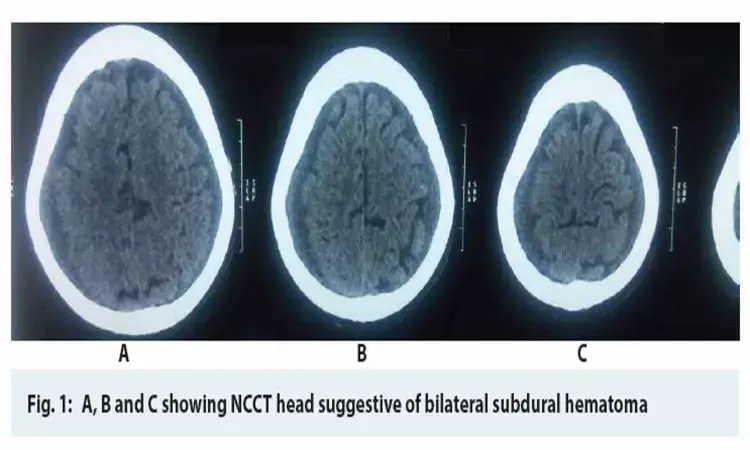- Home
- Medical news & Guidelines
- Anesthesiology
- Cardiology and CTVS
- Critical Care
- Dentistry
- Dermatology
- Diabetes and Endocrinology
- ENT
- Gastroenterology
- Medicine
- Nephrology
- Neurology
- Obstretics-Gynaecology
- Oncology
- Ophthalmology
- Orthopaedics
- Pediatrics-Neonatology
- Psychiatry
- Pulmonology
- Radiology
- Surgery
- Urology
- Laboratory Medicine
- Diet
- Nursing
- Paramedical
- Physiotherapy
- Health news
- Fact Check
- Bone Health Fact Check
- Brain Health Fact Check
- Cancer Related Fact Check
- Child Care Fact Check
- Dental and oral health fact check
- Diabetes and metabolic health fact check
- Diet and Nutrition Fact Check
- Eye and ENT Care Fact Check
- Fitness fact check
- Gut health fact check
- Heart health fact check
- Kidney health fact check
- Medical education fact check
- Men's health fact check
- Respiratory fact check
- Skin and hair care fact check
- Vaccine and Immunization fact check
- Women's health fact check
- AYUSH
- State News
- Andaman and Nicobar Islands
- Andhra Pradesh
- Arunachal Pradesh
- Assam
- Bihar
- Chandigarh
- Chattisgarh
- Dadra and Nagar Haveli
- Daman and Diu
- Delhi
- Goa
- Gujarat
- Haryana
- Himachal Pradesh
- Jammu & Kashmir
- Jharkhand
- Karnataka
- Kerala
- Ladakh
- Lakshadweep
- Madhya Pradesh
- Maharashtra
- Manipur
- Meghalaya
- Mizoram
- Nagaland
- Odisha
- Puducherry
- Punjab
- Rajasthan
- Sikkim
- Tamil Nadu
- Telangana
- Tripura
- Uttar Pradesh
- Uttrakhand
- West Bengal
- Medical Education
- Industry
Spontaneous Bilateral Subdural Hematoma in case of Falciparum Malaria

Dr Ratti Lal Meena Prof. and HOD Medicine, RNT Medical College, Udaipur, Rajasthan and colleagues have reported a case of Spontaneous Bilateral Subdural Hematoma in a patient of Falciparum Malaria that has appeared in the journal of Association of Physicians of India.
Malaria is a protozoan disease transmitted by the bite of infected Anopheles mosquitoes. The most important of parasi t ic disease of humans.1 India, along with Ethiopia, Pakistan and Indonesia accounts for 80% of all malarial cases worldwide. Infections with plasmodium falciparum and plasmodium vivax are the most prevalent.
Here we are reporting a case of P. falciparum malaria associated with unusual subdural hematoma (SDH) and thrombocytopenia that recovered without surgical intervention.
According to the history a 70-year old female presented with complaints of fever, chills, headache for 15 days and altered sensorium for 7 days was admitted to MBGH, Udaipur. There was no rash, petechiae or bleeding observed. There was hepatosplenomegaly on systemic examination. PBF smears showed a severe degree of thrombocytopenia (8000/microL). Detailed Microscopic Examination of Giemsa stained thin and thick PBF smears revealed infested RBC with ring form of P.falciparum. Serum analysis for liver function revealed elevated levels of total bilirubin (2.4 mg/dl), direct bilirubin (1.65 mg/ dl), AST (85 U/L) and ALT (312 U/L). Serology for HIV, Salmonella and Dengue infections were negative. The patient was given parenteral Artesunate (2.4 mg/kg stat iv followed by 2.4 mg/kg at 12 and 24 h and then daily for 6 days) and parenteral clindamycin (10 mg/kg iv BD for 7 days). NCCT brain was done to rule out the cause of headache and altered sensorium. It revealed bilateral SDH (Figure 1). Neurosurgeon advised to manage the patient conservatively. Our patient improved completely with ACT regime. Patient became fully conscious and oriented within 5 days of admission and recovered completely.
She was discharged from the hospital in good clinical condition without any surgical intervention.
As per WHO proposed definition the features of severe malaria includes cerebral malaria, pulmonary oedema, circulatory collapse, DIC, anemia and hepatitis.2 Unusual complication such as bilateral SDH is extremely rare and has been reported only in few cases like in falciparum malaria3,4 or with cerebral malaria.5 Our case is being reported to emphasize the occurrence and amalgamation of severe clinical manifestation in p. falciparum. It is likely that the occurrence of SDH in this case is a secondary complication to thrombocytopenia.
An intrusive approach is required in diagnosing and recognizing multiple complications, which provides a complete and reliable picture of s e vere plasmodi u m i n f e c t i o n s allowing appropriate treatment and management.
For further reference log on to:
Hina Zahid Joined Medical Dialogue in 2017 with a passion to work as a Reporter. She coordinates with various national and international journals and association and covers all the stories related to Medical guidelines, Medical Journals, rare medical surgeries as well as all the updates in the medical field. Email: editorial@medicaldialogues.in. Contact no. 011-43720751
Dr Kamal Kant Kohli-MBBS, DTCD- a chest specialist with more than 30 years of practice and a flair for writing clinical articles, Dr Kamal Kant Kohli joined Medical Dialogues as a Chief Editor of Medical News. Besides writing articles, as an editor, he proofreads and verifies all the medical content published on Medical Dialogues including those coming from journals, studies,medical conferences,guidelines etc. Email: drkohli@medicaldialogues.in. Contact no. 011-43720751


